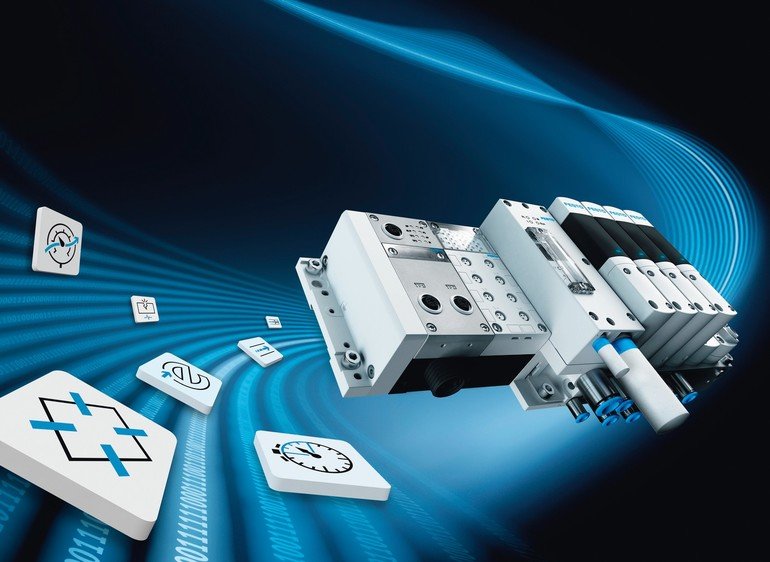Piezo technology, integrated stroke and pressure sensors together with control via motion apps will open up entirely new perspectives for machinery and equipment manufacturers. The fusion of mechanics, electronics and software featured in the Festo Motion Terminal will transform a pneumatic product into a genuine Industry 4.0 component and permit flexible production. Changes in pneumatic functions and adaptations to new formats are controlled via apps by changing parameters. The integrated intelligent sensors for control, diagnostics and self-learning tasks
will eliminate the need for additional components.
When the Festo Motion Terminal is launched, there will be ten functions available via motion apps: from basic modification of the directional control valve functions to energy efficiency and from proportional performance right on up to leakage diagnostics. What makes this so special is that the same valve hardware is used for everything. Thanks to the fast activation of new functions via apps, machine developers can create a basic machine type and then select the relevant apps to equip it with different functions and features in accordance with customer requirements. Further apps are under development.
Assigning functions via software has the added benefit of protecting against tampering and safeguarding know-how, since it isn’t possible to tell from the outside which functions the valves are executing. Maintenance is also simplified, because long lists of spare and wearing parts become a thing of the past.
Intrinsic energy efficiency
The specially developed motion apps, as well as the leakage diagnostic function, save energy during operation. However, energy-saving piezo technology in the proportional valve’s preliminary stage plays a role in this respect as well.
With the Motion Terminal, different pressure levels can be used for opening and closing process valves. This can drastically decrease compressed air consumption if significantly less force or torque is required for one of the two working strokes. In addition, a diagnostic function can be activated after a freely selectable number of switching operations. This function detects any leaks on a drive-specific basis and, depending on their severity, either simply sends a message indicating that maintenance is required or shuts down that section of the plant. Leak detection in extensive networks can thus be avoided.
Any production-related changes that need to be made to the plant, and thus to the individual parameters in the Motion Terminal, can be easily implemented via an integrated interface. Parameters can moreover be changed via the master control system and uploaded to the Motion Terminal in the field via communication interfaces.
However, the Motion Terminal can also autonomously adjust the required opening and closing times for process valves during commissioning. The device permits both fast and powerful motion and leakage diagnostics at much lower costs than current solutions.
Festo
Hall 11.0, Booth E27








